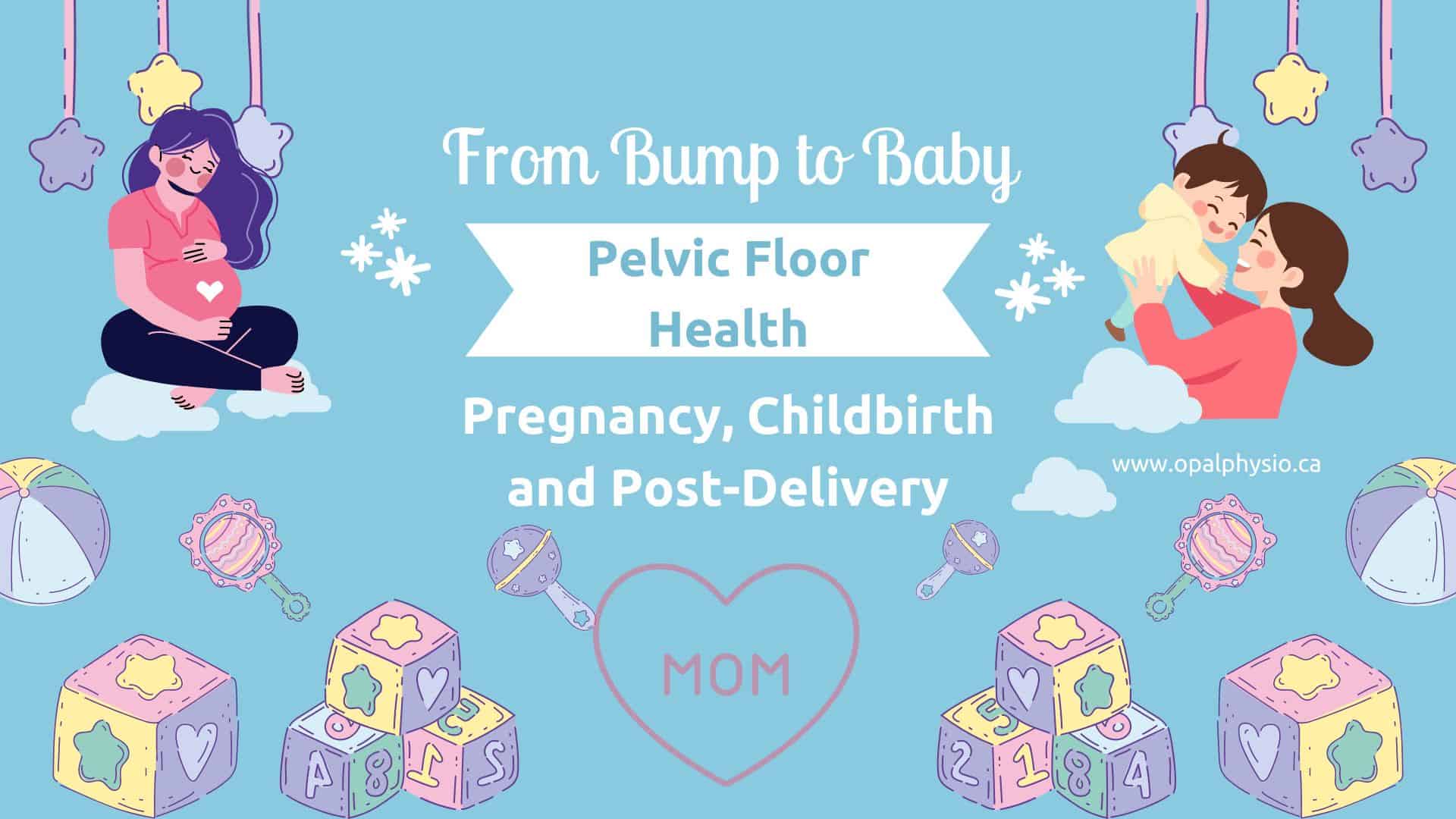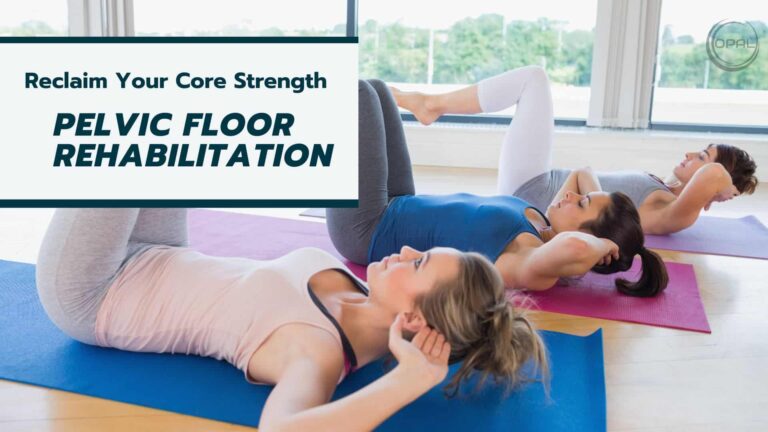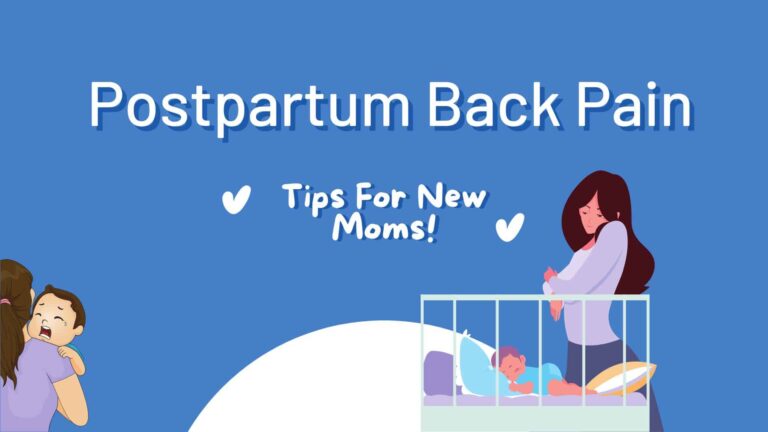From Bump to Baby: Pelvic Floor Health for Pregnancy, Childbirth and Post-Delivery
Pregnancy is a beautiful but complex journey filled with excitement and worry. We look forward to meeting our babies but might not think about our own health enough. As we move from bump to baby, we often overlook one vital health aspect—our pelvic floor health.
Nearly half of pregnant women have issues with weak pelvic floor muscles even before giving birth. This fact shows we must care for ourselves while preparing for our baby.
Our bodies change a lot during these nine months. The growing baby’s weight, hormone changes, and the stress of childbirth impact our pelvic area. But there’s good news: with early and proactive steps, we can make things better.
One of the best actions is doing pelvic floor exercises during pregnancy. These easy, practical exercises strengthen our pelvic muscles, helping us during labour and post-birth recovery.
This article will help you prepare for childbirth and recover after delivery. We will learn about Kegel exercises and the importance of the pelvic floor. With the proper knowledge, tools, and attitude, we can go through this incredible journey from bump to baby feeling strong.
Key Takeaways
- Pelvic floor disorders affect about 50% of pregnant women before delivery.
- Pelvic floor health is crucial for a smoother pregnancy, delivery, and postpartum recovery.
- Diverse pregnancy exercises beyond Kegel exercises significantly enhance pelvic floor health.
- A minimum of 10 minutes of physical activity daily benefits overall strength during pregnancy.
- Healthy bladder habits, such as hydration, are essential for maintaining pelvic floor health.
- Perineal massage in the third trimester can reduce risks of birth trauma.
- Training pelvic floor muscles to relax is crucial for a smoother childbirth.
- Engaging with pelvic floor physiotherapy professionals is crucial part of the motherhood journey.

The importance of pelvic floor health during pregnancy
The pelvic floor is complex and made up of muscles, ligaments, and connective tissues. It supports important organs like the uterus, bladder, and bowels. Keeping the pelvic floor healthy is key to controlling urine and bowel movements and stability during pregnancy and childbirth.
Pelvic floor health is vital during pregnancy. Many women face pelvic floor disorders, so strengthening these pelvic muscles is foundation essential.
Why is pelvic floor health critical?
Pelvic floor health is essential during pregnancy and after childbirth, because it affects a woman’s overall well-being and comfort. The pelvic floor muscles support the important organs in the pelvic area, like the bladder, uterus, and bowel. Various changes in the body during pregnancy can weaken them.
By keeping these muscles strong through exercises and proper posture, expectant mothers can reduce these risks and discomfort, prepare for easier labour, and bounce back more quickly after giving birth.

How does pregnancy impact your pelvic floor muscles?
Pregnancy can significantly affect your pelvic floor, the group of muscles, by undergoing physical and hormonal changes.
Physical changes during pregnancy
When pregnant, our bodies experience many changes. The pressure on the pelvic floor muscles from the extra weight of the growing baby makes them weak and leads to pelvic floor issues in some women, like bladder control problems, mainly in the last two trimesters.
During childbirth, pelvic floor muscles can be stretched or even injured, which may lead to complications such as persistent incontinence or discomfort.
Hormonal changes affecting stability
Our bodies also deal with hormone changes affecting the pelvic floor. The hormone relaxin makes our ligaments more flexible. This is good for childbirth but can make the pelvic area less stable.
Proper prenatal care and pelvic floor exercises can help prepare these muscles for the demands of labour and aid in quicker recovery postpartum.

Stages of pregnancy and childbirth
Pregnancy and childbirth are incredible journeys that unfold in distinct stages. Pregnancy itself is divided into three trimesters, each lasting about three months. During these trimesters, the baby grows from a tiny cluster of cells into a fully formed infant. As the due date approaches, labour begins, marking the start of childbirth.
Building a strong foundation for pelvic health in the first trimester is necessary. This means focusing on good prenatal nutrition, doing light exercise, and having healthy habits for bladder and bowel movements.
First Trimester: Laying the Foundation
Nutrition for pelvic health
Good prenatal nutrition is vital for your pelvic health during pregnancy. Eating foods full of vitamins, minerals, and fibre helps strengthen your muscles and tissues. It also supports bladder health and regular bowel movements.
Eating fruits, vegetables, whole grains, and lean proteins daily is good. Drinking enough water is also critical. It helps avoid constipation and urinary problems, keeping your pelvic area healthy.

Gentle movement and exercise
Mild to moderate level exercise while pregnant is great for your pelvic floor muscles. Gentle exercises and activities are soft on the body and keep your muscles toned without overdoing it. Regular, light exercise improves your blood flow, flexibility, and overall health. Remember, always do what feels right for you and follow any advice from your healthcare professionals.
Establishing healthy bladder and bowel habits
It is really important to take care of your bladder and bowel habits in the first three months of pregnancy.
- To keep your bladder healthy, drink plenty of water each day, but cut back on coffee and diet sodas.
- Go to the bathroom when you need to, not just because you think you should.
- For good bowel health, eat lots of fruits and veggies to avoid constipation.
- Light exercise, like walking, can also help keep things moving.
- It’s a good idea to start pelvic floor exercises early on. These exercises strengthen the muscles around your bladder and bowel, which can help prevent leaking later.
If anything feels off or uncomfortable, don’t hesitate to talk to your healthcare provider. They can give you advice that’s right for you.

Second trimester: Building awareness and strength
We’re now in the second trimester, a great time to focus on building awareness and strength in your body. As your baby grows, you might start feeling more energetic and less nauseous, making exercising easier. At this stage, you must pay special attention to your core and pelvic floor muscles, which are crucial in supporting your growing belly and reducing pain.
Pelvic Floor Exercises (Kegels and Beyond)
Pelvic floor exercises, including Kegels and other techniques, are important for maintaining good health in the pelvic region. They strengthen the muscles that support your pelvic organs.
Connecting with your pelvic floor muscles during pregnancy helps your pelvic health and your baby’s well-being. To keep them strong, try doing simple exercises like Kegels, which involve tightening and relaxing the muscles you use to stop urine flow. Regular pelvic floor exercises can help you maintain control and support your body as it changes.
Maintaining overall physical activity
While Kegels are indeed popular, many other exercises can be beneficial during pregnancy and staying active is vital.
Gentle yoga enhances flexibility and reduces stress while swimming offers a full-body workout with minimal joint strain. Walking is a simple yet effective way to stay active and elevate your mood. Additionally, pelvic tilts alleviate back pain and strengthen core muscles, and squats are beneficial for preparing the body for labour and delivery.
These activities can help you stay fit, manage pregnancy discomfort, and prepare your body for the big day. Remember to check with your doctor before starting any new exercise routine during pregnancy.
Benefits of posture during pregnancy
Maintaining good posture during pregnancy is essential for the mother’s comfort and the baby’s well-being. Proper posture helps to reduce back pain, which is common as the body adjusts to the growing belly. Pregnant women can improve their overall comfort by standing, sitting, and lying in ways that minimize strain on the back.

Third trimester: Preparing for labour and delivery
As you enter the third trimester, it’s time to prepare for the big day! From week 28 to birth, this period is all about preparing for your baby’s arrival. It’s normal to feel excited and a bit nervous about labour and delivery. Start by taking childbirth classes to learn about the labour process and pain relief options, which can help you feel more confident and less anxious.
Monitor your baby’s movements and understand the signs of early labour. Create a birth plan outlining your preferences for labour and delivery. Staying active and eating nutritious foods will help keep you strong and energized.
Remember to rest as much as possible, as your body is working hard to prepare for your baby’s arrival. Remember, every birth is unique, so stay flexible and positive as you approach this amazing life event.

Labour and delivery: Setting your preparation into practice
Entering labour and delivery means using what we’ve learned during pregnancy. It’s all about applying knowledge. This includes knowing about the pelvic floor, childbirth positions, and how to push right. Managing pain effectively also counts.
Using pelvic floor awareness during labour
Integrating pelvic floor awareness into labour preparation can significantly influence childbirth outcomes. By focusing on pelvic health through education, physiotherapy, and proactive management of pressure and positioning, women can enhance their birthing experience and reduce the risk of pelvic floor dysfunction post-delivery.
Also when it comes to pelvic dysfunction Its important to know about the biopsychosocial effects of pelvic Floor dysfunction and pelvic Pain.
Positions and techniques for easier pushing
Effective pushing during labour can significantly influence the birthing experience, and the choice of position plays a crucial role.
While many women traditionally push while lying on their backs, this position can hinder optimal pelvic alignment and may not be the most effective for facilitating labour. Instead, positions such as squatting, kneeling, or being on all fours utilize gravity and promote pelvic opening, which can help move the baby down the birth canal more efficiently.
Techniques like open glottis pushing can enhance the effectiveness of pushes while reducing the risk of tearing and fatigue. It’s also beneficial to keep the knees together and ankles apart to maximize pelvic space and support the baby’s descent.
By exploring various positions and techniques, mothers can find what feels most comfortable and effective during this critical stage of labour.
Pain management options during labour
Pain management during labour and vaginal birth is a crucial aspect of the birthing experience, and there are various options available to help women cope with the pain. Medical pain relief methods include epidural analgesia for pain relief, which is a popular choice for pain relief while allowing the mother to remain alert. Another option is nitrous oxide, a gas that can be inhaled to help manage pain and anxiety.
For those preferring non-medical approaches and wanting natural pain management during vaginal delivery, techniques such as breathing exercises, TENS, massage, guided imagery, and warm or cold compresses may provide significant relief and comfort to the mother. Complementary therapies like acupuncture and aromatherapy may also be considered, although their effectiveness varies among individuals.
Expectant mothers need to discuss their pain relief preferences with their healthcare providers ahead of labour to ensure a supportive and informed birthing experience.

Postpartum Recovery: Nurturing Your Pelvic Floor
To maintain pelvic floor health after childbirth, new moms can follow several important tips that focus on recovery, exercises, and awareness of their bodies. Here are some key strategies for pelvic floor health post-delivery:
Understanding pelvic floor changes
After childbirth, the pelvic floor may experience various changes, including stretching, weakening, or even dysfunction, which can lead to issues such as urinary incontinence, pelvic pain, or a feeling of heaviness. New moms report having postpartum pain related to vaginal birth or cesarean delivery. Recognizing these changes is crucial for addressing them effectively.
Learn about C-Section Recovery.
Timeline for Pelvic Floor Recovery
Healing after childbirth takes time. The first six weeks are for initial healing. During this time, gentle activities like walking help with blood flow and swelling. At six weeks, doctors usually say it’s okay to start more structured exercise. But it’s important to listen to our bodies through this process.
If issues like urinary incontinence or pelvic pain pop up, don’t worry. Doing pelvic floor recovery exercises for a few months can make a big difference. They help us get stronger and more in control.
Also read about Postpartum Depression | Physical Self-Care Recovery Strategies For New Moms
Start early with exercises.
- Pelvic floor exercises: New mothers can begin pelvic floor exercises, such as Kegels, as soon as they feel comfortable postpartum the day after giving birth, even with stitches. These exercises help strengthen the pelvic muscles and can alleviate symptoms of dysfunction. However, don’t overdo it – start slowly and gradually increase as recommended by your healthcare provider.
- Gentle movement: Incorporating gentle exercises can support recovery. Focus on core-strengthening movements while avoiding traditional crunches or sit-ups, which may strain the pelvic floor.
- Diaphragmatic breathing: This technique can help re-establish the connection between the core and pelvic floor muscles, promoting overall pelvic health.
Professional guidance
- Consult a pelvic floor physiotherapist: It is advisable for new moms to seek an assessment from a pelvic floor physical therapist around 6 to 8 weeks postpartum. They can provide tailored exercises and strategies based on individual needs.
- Monitor symptoms: If experiencing persistent issues like urinary leakage, pelvic pain, painful intercourse, or any symptoms of depression, baby blues and anxiety, it’s important to consult a healthcare provider for further evaluation and potential referral to a specialist.
Learn about Women’s Health and conditions that can be helped by pelvic therapist.
Supportive practices
- Posture and mechanics: Practicing good posture and proper lifting mechanics can help protect the pelvic floor during the physical demands of caring for a newborn.
- Hydration and diet: Maintaining hydration and a fibre-rich diet can support bowel health, which is crucial for pelvic floor recovery. Avoiding constipation can reduce strain on the pelvic area.
- Use recovery products: Items like peri bottles and Sitz baths can aid in healing and comfort post-delivery, especially after a vaginal delivery. Use ice packs and compression in the first few days after delivery to reduce swelling and provide pain relief in the perineal area.
Trust your body
Finally, new moms should trust their intuition regarding their bodies. If something feels off or different, it’s essential to communicate with healthcare providers to ensure proper care and support during recovery.
By following these tips, new mothers can effectively manage their pelvic floor health and promote a smoother recovery after childbirth.

Working with pelvic health professionals
Engaging with pelvic health professionals is crucial for pelvic floor health. They offer advice and treatments that match individual needs. This includes pelvic floor physiotherapy and assessments.
Benefits of seeing a pelvic floor physiotherapist
Consulting a pelvic floor physiotherapist has many benefits. They aid in recovery before and after birth, helping with urinary incontinence, pelvic pain, and prolapse. Research shows that exercises overseen by these experts can ease labour and lessen pain after birth.
Their personalized support ensures exercises are effective, boosting pelvic health now and later.
What to expect during a pelvic floor assessment
A pelvic assessment begins with discussing your medical history and any issues you’re facing. The therapist will check your pelvic floor muscles’ strength and coordination. This may include external and internal exams for a full view of your pelvic health.
Then, they prepare a treatment plan with exercises, education, and hands-on techniques to enhance your well-being and reduce discomfort.
Finding the right pelvic health therapist
To find a good pelvic health therapist, start with recommendations from your doctor or obstetrician. Make sure they have the right training and experience. It’s vital to feel at ease with them, so book a chat to talk over your needs and goals. Reading reviews from other patients can also guide your choice.
Overall, partnering with pelvic health professionals offers strong support and care, ensuring better pelvic health during pregnancy, childbirth, and afterwards.

The importance of pelvic floor health in motherhood
Taking care of your pelvic floor health is crucial during pregnancy, childbirth, and beyond. By understanding your pelvic floor, practicing regular exercises, and seeking professional help when needed, you can support your body through the incredible journey of motherhood and maintain optimal pelvic health for life. Remember, every woman’s journey is unique, so be patient with your body and celebrate each step of progress.

Cynthia Pathipati – Registered Physiotherapist
Cynthia Pathipati completed her bachelor’s in physiotherapy and is a qualified Registered Physiotherapist in good standing with the College of Physiotherapists of BC with more than 15 yrs of experience. She has Post-Graduate Credentials and Certifications as well as extensive knowledge experience in treating pelvic floor, orthopedic, neurological, vestibular and pain conditions.







